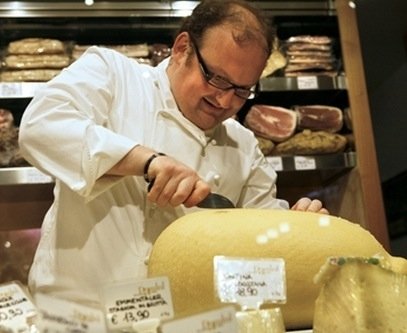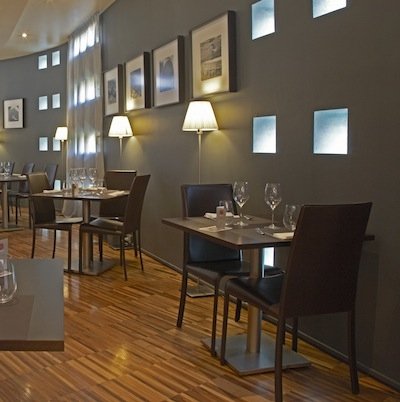My point of view on “dining room management” is that of a person who, after being a client for years, began a peculiar restaurant business: the dining room service is completed by a store, a butcher and a delicatessen.
According to our philosophy “respect for clients and raw materials” needs to be at the centre of every action and therefore we have tried to structure the dining room by valorising the guests’ point of view. In particular, we have paid attention to their needs. In other words, I tried to understand what I liked, and what I did not, in the management of the dining rooms in the restaurants I visited. I came to the conclusion that I wanted to create a welcoming setting, capable of transmitting some “domestic warmth” because – in my opinion – being in a restaurant with all the comforts of your own home is the best thing.

As for the management of the staff, I realised that catering students often receive an anachronistic education, which is not suitable for the dynamics of contemporary restaurants, with their new formats. For instance, in our case, clients are seated at a table in the restaurant area but they must feel free to get up and roam in the shop whenever they want, making it possible for them to choose a product they might want to taste right there and then, from the ones on the shelves. This implies that the waiter needs to follow him in his purchasing process, he needs to know how to explain all the products on sale and have a talent that goes beyond that of the traditional waiter.
Knowing how to deal with a client even when he’s not sitting at the table, means in fact that you need to be prompt enough to stop the preparations in the kitchen, trying to avoid the case of dishes arriving at the table while the client is not sitting there (something which would suddenly stop his purchase, on top of making the dish get cold). This also implies that waiters need to be capable of working as a team, and not in a hierarchy, because if a colleague moves to follow a client, the others need to compensate for his absence, by monitoring the entire room, and not just a handful of tables.

On top of being able to explain the recipes, the waiter needs to be able to explain the restaurant’s complexities and dynamics to the guests at the table. He needs to be the first promoter and supporter of the brand. Even we, as managers, should examine our conscience and understand if we motivate our staff enough, if we really make them all feel as part of a team. Sharing training experiences with our employees outside the restaurant, introducing them to our suppliers, engaging them in food events are all strategies that can help the team to share the added value which we can give to the clients. The dining room staff should not feel as “plate-carriers” but people thanks to whom the work of the chef is valorised as it is thanks to them that the kitchen and dining room can communicate.
Moreover, in the new restaurant/shop formats we should not forget that it is necessary to act in a sustainable way, trying to reduce superfluous expenses in terms of staff. In practice, the new role of the dining room staff should be able to do many more things, in comparison to the traditional waiter, including walking clients with their products to the car, if requested. It is a new concept of sustainability: inside a team, the same person can and should have more than one role.
In times when all the attention is focused on chefs, as patrons we need to help the dining room staff to grow emotionally: we have to help them create a good relationship with our clients, to understand what are their needs, if they are in a rush or what their expectations are.